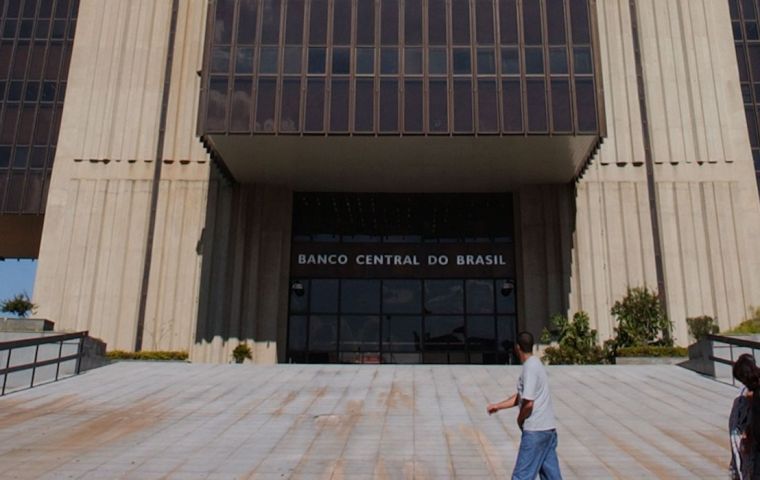MercoPress. South Atlantic News Agency
Brazil's central bank cuts Selic lending rate to a record low of 2%
 The bank's monetary policy committee trimmed the Selic to 2% from 2.25%, the ninth consecutive reduction
The bank's monetary policy committee trimmed the Selic to 2% from 2.25%, the ninth consecutive reduction Brazil's central bank cut its key Selic lending rate to a record low on Wednesday and left the door open for more cuts, as the outlook for inflation remains below target amid the impact of the coronavirus pandemic on the economy.
The bank's monetary policy committee trimmed the Selic to 2% from 2.25%, the ninth consecutive reduction. Any future cuts might take place with more time between changes amid greater-than-normal uncertainty about economic growth, the bank said in its statement.
“Due to prudential and financial stability reasons, the remaining space for monetary policy stimulus, if it exists, should be small,” the bank said. “Possible future adjustments to the current degree of monetary stimulus would occur with additional gradualism.”
Brazil's economy has already begun to recover from the steep drops in activity suffered in the first months of the pandemic, and economists have trimmed their forecasts for price increases and cut back how much they think gross domestic product will decline this year.
The median forecast in the central bank's weekly survey of economists is for the 12-month inflation rate to end the year at 1.63%, well below the bank's target of 4% for 2020 and below the 1.67% forecast in the previous week's survey. Economists see inflation ending next year at 3%, below the 3.75% target for 2021.
GDP will shrink 5.66% this year, compared with the forecast for a contraction of 5.77% a week earlier, and the economy will grow 3.5% next year, according to the survey.
The outlook for growth is still cloudy. The central bank's policy makers have said the government needs to get spending under control and keep up the pace of economic reforms for rates to stay low.
The government has programmed additional spending of about US$ 100 billion since the start of the pandemic, including to provide income to the millions of Brazilians who work in the informal economy, such as cleaners and delivery people, who aren't helped by additional spending on unemployment insurance.
The central bank also has done its part by boosting liquidity in the financial system, easing credit terms, and making it easier for individuals and businesses to renegotiate their debts, among other things.
With the measures approved by the government, Brazil's national debt is expected to soar to 94.9% of GDP at the end of this year, from 75.8% at the end of 2019, according to a forecast by Fitch Group.




Top Comments
Disclaimer & comment rulesCommenting for this story is now closed.
If you have a Facebook account, become a fan and comment on our Facebook Page!